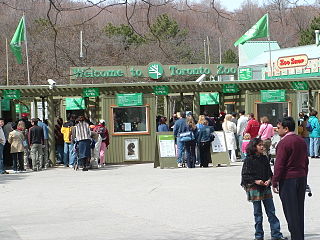
The Toronto Zoo is a zoo located in Toronto, Ontario, Canada. Encompassing 287 hectares, the Toronto Zoo is the largest zoo in Canada. It is divided into seven zoogeographic regions: Indo-Malaya, Africa, Americas, Tundra Trek, Australasia, Eurasia, and the Canadian Domain. Some animals are displayed indoors in pavilions and outdoors in what would be their naturalistic environments, with viewing at many levels. It also has areas such as the Kids Zoo, Waterside Theatre, and Splash Island. It has one of the most taxonomically diverse collection of animals on display of any zoo worldwide; it is currently home to over 5,000 animals representing over 500 species. The zoo is open to the public every day of the year except December 25.

Children's Fairyland, U.S.A. is an amusement park, located in Oakland, California, on the shores of Lake Merritt. It was one of the earliest "themed" amusement parks in the United States. Fairyland includes 10 acres (4.0 ha) of play sets, small rides, and animals. The park is also home to the Open Storybook Puppet Theater, the oldest continuously operating puppet theater in the United States.

The Detroit Zoo is a zoo located in the cities of Huntington Woods and Royal Oak in the U.S. state of Michigan. Spanning 125 acres (50.6 ha), it houses more than 2,000 animals and more than 200 different species. It was the first U.S. zoo to feature bar-less habitats, and is regarded to be an international leader in animal welfare, conservation and sustainability by the Detroit Zoological Society.

The Cleveland Metroparks Zoo is a 183-acre (74 ha) zoo in Cleveland, Ohio. The Zoo is divided into several areas: Australian Adventure; African Savanna; Northern Wilderness Trek, The Primate, Cat & Aquatics Building, Waterfowl Lake, The RainForest, and the newly added Asian Highlands. Cleveland Metroparks Zoo has one of the largest collections of primates in North America, The Zoo is a part of the Cleveland Metroparks system.
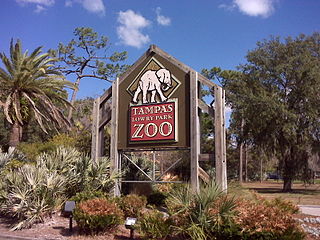
ZooTampa at Lowry Park is a 63-acre (25 ha) nonprofit zoo located in Tampa, Florida. In 2009, Lowry Park Zoo was voted the #1 Family Friendly Zoo in the US by Parents Magazine, and is recognized by the State of Florida as the center for Florida wildlife conservation and biodiversity. The zoo is operated by the Lowry Park Zoological Society, an independent 501(c)(3) charitable organization. The zoo also exists as a center for conservation of endangered wildlife both locally and around the globe. Tampa’s Lowry Park Zoo is accredited by the Association of Zoos and Aquariums (AZA) as well as a member of the World Association of Zoos and Aquariums (WAZA), Conservation Breeding Specialist Group (CBSG), the Florida Association of Zoos and Aquariums (FAZA) and the Florida Attractions Association (FAA).

The Central Park Zoo is a 6.5-acre (2.6 ha) zoo located at the southeast corner of Central Park in New York City. It is part of an integrated system of four zoos and one aquarium managed by the Wildlife Conservation Society (WCS). In conjunction with the Central Park Zoo's operations, the WCS offers children's educational programs, is engaged in restoration of endangered species populations, and reaches out to the local community through volunteer programs.

The Prospect Park Zoo is a 12-acre (4.9 ha) zoo located off Flatbush Avenue on the eastern side of Prospect Park, Brooklyn, New York City. As of 2016, the zoo houses 864 animals representing about 176 species, and as of 2007, it averages 300,000 visitors annually. The Prospect Park Zoo is operated by the Wildlife Conservation Society (WCS). In conjunction with the Prospect Park Zoo's operations, the WCS offers children's educational programs, is engaged in restoration of endangered species populations, runs a wildlife theater, and reaches out to the local community through volunteer programs.

The Miami-Dade Zoological Park and Gardens, also known as Zoo Miami, is a zoological park and garden in Miami and is the largest zoo in Florida. Originally established in 1948 at Crandon Park in Key Biscayne, Zoo Miami relocated in 1980 as Miami MetroZoo to the former location of the Naval Air Station Richmond, southwest of Miami in southern unincorporated Miami-Dade County, surrounded by the census-designated places of Three Lakes (north), South Miami Heights (south), Palmetto Estates (east) and Richmond West (west).

Old Brooklyn is a neighborhood on the West Side of Cleveland, Ohio, United States, located approximately five miles south of downtown Cleveland. It extends east-to-west from the Cuyahoga River to the city of Brooklyn and north-to-south from the Brookside Park Valley to the city of Parma. It is home to the Cleveland Metroparks, including the Cleveland Zoo; the Jesse Owens tree at James Ford Rhodes High School; and the Benjamin Franklin Community Garden, the largest urban community garden in Cuyahoga County. Old Brooklyn has recently adopted the slogan "Old Brooklyn, a great place to grow" to commemorate its history and potential growth.

Cleveland Metroparks is an extensive system of nature preserves in Greater Cleveland, Ohio. Eighteen reservations, which largely encircle the city of Cleveland, follow along the shore of Lake Erie and the rivers and creeks that flow through the region. Referred to unofficially as the 'Emerald Necklace', the network of parks spans over 24,000 acres (9,700 ha) and includes over 300 miles (480 km) of walking, bicycle, and horse trails as well as numerous picnic areas, nature education centers, golf courses, and countless fishing spots. In addition, the district includes the zoo in Cleveland. Four of the reservations are adjacent to Cuyahoga Valley National Park.

Denver Zoo is an 80-acre (32 ha) nonprofit zoological garden located in City Park of Denver, Colorado, United States. Founded in 1896, it is operated by the Denver Zoological Foundation and funded in part by the Scientific and Cultural Facilities District (SCFD) in addition to ticket sales and private donations. It is the most visited paid attraction in Colorado.
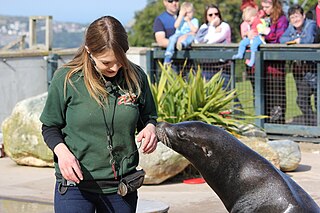
A zoo is a facility in which animals are kept within enclosures for public exhibition and often bred for conservation purposes.

The Fulton Road Bridge was the name of two bridges in Cleveland, Ohio, the original and its replacement. The bridge in the Old Brooklyn neighborhood spans the Cleveland Metroparks Zoo, Big Creek, John Nagy Boulevard, and Norfolk Southern and CSX railroad tracks.

Batyr was an Asian elephant claimed to be able to use a large amount of meaningful human speech. Living in a zoo in Kazakhstan in the Soviet Union, Batyr was reported as having a vocabulary of more than 20 phrases. A recording of Batyr saying "Batyr is good", his name and using words such as drink and give was played on Kazakh state radio and on the Soviet Central Television programme Vremya in 1980.
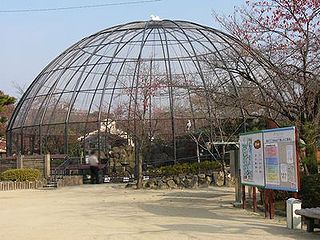
Kyoto City Zoo (京都市動物園) is a zoo located in Sakyō ward, Kyoto and was established in 1903, making it the second oldest zoo in the country after Ueno Zoo in Tokyo.

Broad Ripple Park Carousel is an antique carousel in The Children's Museum of Indianapolis. It was installed in 1917 at an amusement park near the White River in Indianapolis, Indiana, where it remained until the building housing it collapsed in 1956. The ride's mechanism was destroyed, but the animals were relatively unscathed and put into storage by the park's owners, the Indianapolis Department of Parks and Recreation. The animals were carved by the Dentzel Carousel Company some time before 1900 but were assembled by the William F. Mangels carousel company, which also supplied the engine powering the ride.
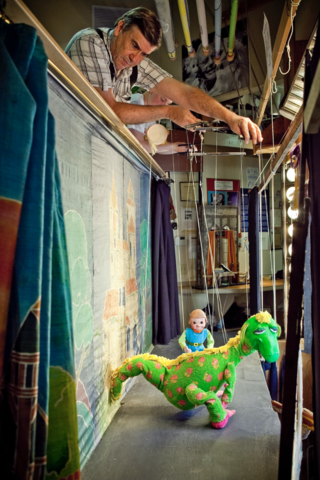
Randal John Metz is a professional puppeteer and variety/stage performer. He is known for creating puppet productions, and puppet performer for Children’s Fairyland’s Open Storybook Puppet Theater in Oakland, California, the oldest continuously operating puppet theater in the United States. He currently produces seven different puppet shows a year for the theater, and tours his shows throughout California under the name The Puppet Company. He has served several terms as President and Vice-President of the San Francisco Bay Area Puppeteers Guild.

Corina Newsome is an American ornithologist, birder, science communicator, and graduate student at Georgia Southern University. In response to the racism faced by Black birder Christian Cooper in Central Park, Newsome co-organized Black Birders Week to celebrate Black birders.



















